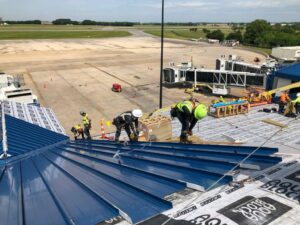Nashville’s Speed Cushions: A Boon or a Bump for Emergency Responders?
Nashville, Tennessee, has always been a vibrant city full of music, culture, and charm. However, recent changes in the roadways have stirred up a mix of feelings among locals. If you’ve been driving around town, chances are you’ve noticed the new speed cushions popping up everywhere. Designed to keep our roads safer by slowing down traffic, these cushions are also raising important questions about their impact on emergency response teams.
What Are Speed Cushions?
For those unfamiliar, speed cushions are similar to speed bumps but with a twist. They are raised sections of the roadway that aim to slow down cars as they pass over them. However, they are designed wider, allowing emergency vehicles like ambulances and fire trucks to straddle them without having to slow down too much. Sounds great, right? Well, not everyone is convinced of their benefits.
The Good, the Bad, and the Bumpy
On one hand, these cushions aim to create a safer environment for pedestrians and cyclists. They are placed in neighborhoods, schools, and busy areas where speeding has become a concern. But what about the other side of the coin – the reality that emergency responders face on the job?
According to Cory Gibson, an instructor for Vol State paramedics, hitting these cushions can be a bumpy ride, quite literally. He expressed his concerns, stating, “If we hit that bump, it’s going to throw them around. It’s going to throw the patient around.” This statement raises a significant concern about how these speed cushions could potentially complicate emergency situations where every second counts.
Unexpected Challenges for First Responders
Imagine racing through traffic, lights flashing, sirens blaring, when suddenly you hit a speed cushion. The abrupt jolt not only affects the speed of the ambulance but also can jostle patients already in distress. “They come up sometimes overnight and they don’t send us out any kind of warning about them,” Gibson explained. This lack of notification can create serious complications during emergencies, leaving responders to guess where the next cushion might be.
Balancing Safety and Urgency
City officials have undoubtedly considered the speed cushions’ benefits, yet they also recognize the challenges they bring to emergency services. As the balance between public safety and urgent medical response is delicate, conversations about the long-term effectiveness of speed cushions are ongoing. Local government will likely need to address how to better communicate roadway changes to first responders.
What Residents Think
As Nashville residents, our thoughts on speed cushions vary. Some appreciate the decreased speeds, feeling safer as they navigate their neighborhoods. Others, particularly those with experiences in medical emergencies, have raised valid concerns similar to those voiced by the paramedics. It’s a classic case of balancing safety for all citizens while ensuring that emergency teams can do their job effectively.
Moving Forward
While many Nashville residents might still love or loathe these speed cushions, it’s essential to recognize the implications they carry for those who rush to help in emergencies. As the city continues to grow and implement measures meant to protect citizens, keeping open lines of communication between city planners and emergency responders will be crucial. Only time will tell how Nashville navigates these changes and finds a solution beneficial to all.
So next time you drive through Nashville and hit a speed cushion, take a moment to think about both the safety and the urgent need for responders. After all, it’s about finding ways to keep our beloved Music City safe while ensuring we can receive help when we need it most.








